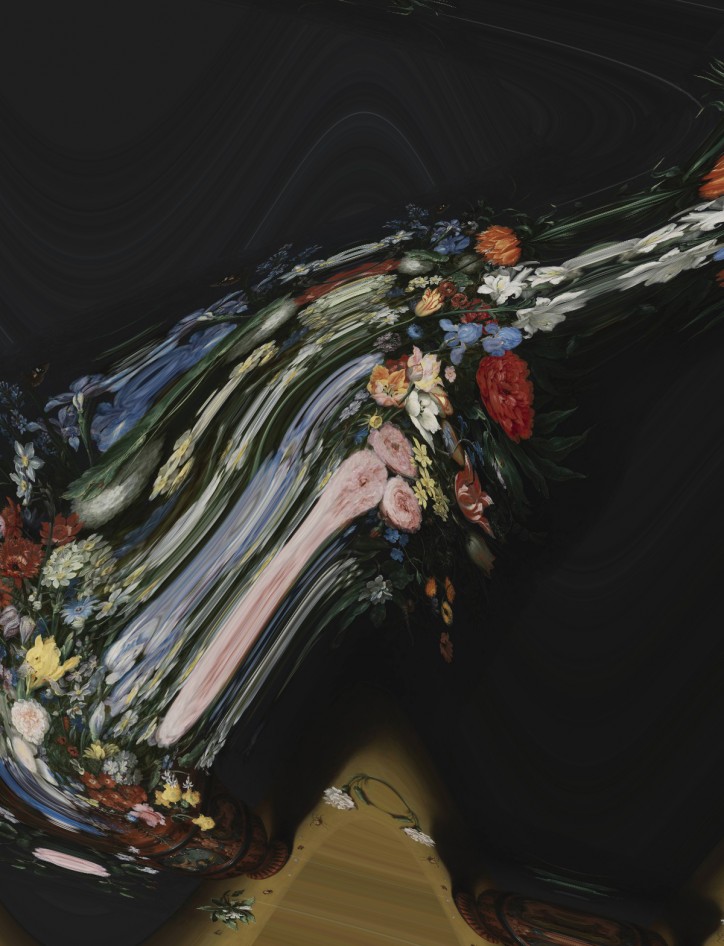
At the bottom of his work the artist placed small- and medium-sized flowers, such as forget-me-nots, narcissi, primroses and roses; slightly larger ones – tulips, gerber daisies and irises – occupy the centre of the image. Higher up there appear sumptuous peonies, tiger lilies and hydrangeas. The largest – white lilies, blue irises and a magnificent crown imperial – top off the bouquet.
You can read about this complex floral composition below the image.

Bouquet of Flowers in a Ceramic Vase: this banal title hides one of the most beautiful








